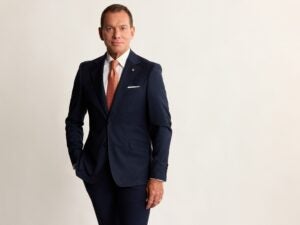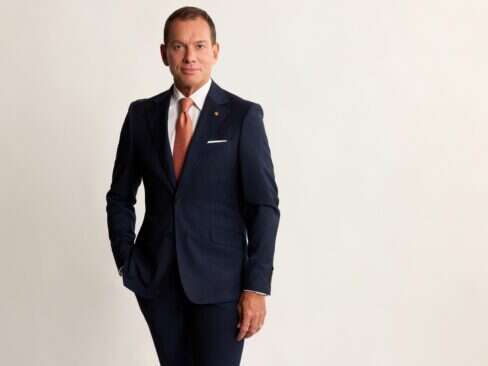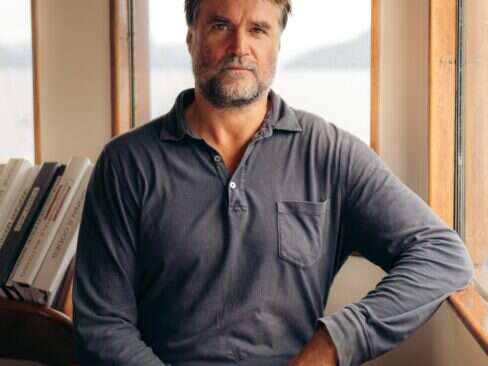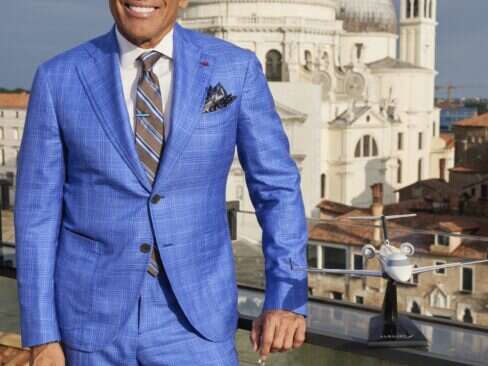What does frozen garlic bread have to do with luxury timepieces? For Detroit born entrepreneur Scott Devon, it’s the source of the money that has enabled him to pursue his passion for mechanical design and innovation. From a small bakery owned by the Devon family, Cole’s Quality Foods is estimated by Crain’s Detroit to today generate over $100 million in annual sales. The insight that put it on the road to success is when Scott’s father noticed how much money was being lost throwing away day old bread. Inventing the Frozen Garlic Bread category has meant the resources to do other things. Recently DEVON WORKS named watch industry veteran Ron Jackson Global President. During a visit to New York, the former boss at Girard-Perregaux, Franck Muller and DeWitt talked about what’s ahead for the Los Angeles-based company.
Elite Traveler: How did you meet Scott Devon?
Ron Jackson: I met Scott in January of 2010. Scott was on the tail end of producing the GTX automobile. I was brought in to be a consultant on watches. At the time Scott’s vision was for DEVON to become a lifestyle brand with an American flare, avant-garde styling and the best technology. I was brought on as the watch guy. I sat with the engineers who made the Tread 1 and Tread 2 and went through each of the components to break it down to terms, phrases and descriptions that the watch press and watch consumer could understand because it is a totally different product than anybody has ever seen before.
ET: What makes the watches different?
RJ: It is really a hybrid, and it is interesting with automobiles hybrid is becoming common. Hybrid systems include electric and mechanical systems. The concept was to create a throwback to the industrial revolution of the United States. The Time Belt comes from the idea of a conveyer belt, and there are Time Belts for hours, minutes, seconds. We had to create a trademark description because it is so different.
ET: Is Devon still launching other lifestyle products?
RJ: One of the things that changed is there were different complications in the other product segments. The GTX was built on Viper chassis, but the brand went out of business. (Our timepiece) was nominated for innovation at the Grand Prix in Geneva and watches took off. The world of jeans, leather goods and cars are a cluttered market, and the products weren’t as identifiable. The watch segment has the most promise so what Scott has done is take the resources that were divided and focused them all on the watch business.
ET: Tell us more about the watches?
RJ: The brand is successful and our biggest problem is being able to manufacture to satisfy demand. It’s American made. The cases are made in Los Angeles. The movement is a circuit board. If you go from the back to the front there is a lithium ion battery, and it runs for about two weeks without a charge. It charges through the case. The charge goes into a very sophisticated circuit board that has 315 connections that drive the belts. The belts are controlled by optical sensors that look for the markings on the belt. With this watch, when you turn off the watch, it will reset to zero. The minutes and seconds belts will go to zero and the hour belt will go to 12. When the watch is sleeping you can see the battery life. Internally the time is being kept like a computer chip, so when you turn it back on it will go directly to perfect time. People are excited it’s a totally different technology. The mistake is people think a battery watch is a quartz watch and a mechanical watch is a mechanical watch. This is a complex piece of electronics.
ET: Where are you on production?
RJ: This year we’ll have produced about 1,000 pieces worldwide. It’s a small production because it’s a very complicated product. Each board has to be tested for three days and we test the movement at eight times the normal speed, which simulates 24 days. If you look at a mechanical watch typically it’s 24 to 48 hours.
ET: What is the pricing?
RJ: Tread 1 which has four belts is from $15,000 to $25,000 and Tread 2 has two belts and goes from $11,000 to $15,000.
ET: Are you riding the wave of American luxury brands?
RJ: American made resonates as long as it has a panache to it. Ralph Lauren is successful around the world, and it is perceived as an American brand even if everything isn’t made in America. Scott is committed to make all of the critical elements of our watch in the United States.
ET: What’s next?
RJ: We’re working with RGM, and we’re in the prototyping stages of a mechanical Time Belt, so it will be a U.S. made mechanical movement powering the patented Time Belts. If everything goes as expected it will be out by Basel next year. We are working on a limited edition with another brand but nothing I can say at this point. But it will be really something. It’s a co-branding, more Hollywood.
ET: Where are you selling?
RJ: The U.S. market is the biggest. We also have Italy, Germany, Australia, India, Singapore and Japan. China is still relatively untapped, and we are looking for the right partner. In the U.S. we have Tourneau, Westime, Kings 1912 and Provident in Jupiter.
ET: What are people most surprised about?
RJ: One of the things people don’t know about is Scott Devon, and what drives a man who is already financially well off? He came into the watch business out of a passion and that it will become a generational brand for the Devon family. He is a successful entrepreneur, he is a renowned polo player, and he’s played polo for the majority of his adult life. He’s a sportsman. He has a keen eye for design. He is passionate about creating something he and his family will be proud of. It’s an advantage in making a product that goes into the luxury segment. At the same time he is very understated. He lives in Michigan but he travels the world. He is self-made. As you know in the luxury industry, so many people present their image as something that it’s not, whereas this is the life Scott lives. He’s the real deal. People who can afford to buy a product like a DEVON appreciate that these products are part of the same lifestyle he lives.
ET: Any other thoughts?
RJ: We have the resources to go where we need to be, and part of the strategy is you have to know where you want to go, and hopefully I can bring the right distribution partners and the marketing expertise.











